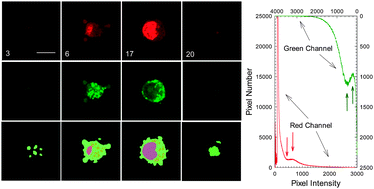Comparative study of 3D morphology and functions on genetically engineered mouse melanoma cells†
Abstract
Quantification of 3D morphology and measurement of cellular functions were performed on the mouse melanoma cell lines of B16F10 to investigate the intriguing problem of structure–function relations in the genetically engineered cells with GPR4 overexpression. Results of 3D analysis of cells in suspension and phase contrast imaging of adherent cells yield consistent evidence that stimulation of the


 Please wait while we load your content...
Please wait while we load your content...